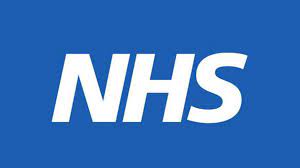Stroke
- 30 Nov 2023
- 1 Minute to read
- Print
- PDF
Stroke
- Updated on 30 Nov 2023
- 1 Minute to read
- Print
- PDF
Article summary
Did you find this summary helpful?
Thank you for your feedback
- The baseline risk of stroke for women is age related and overall, the risk is low in women under 60 years.
- Risk differs between ethnic groups and may be greater in Black people.
- Oral oestrogen is associated with a small increase in the risk of stroke, and this effect is likely to be dose related.
- In contrast, transdermal oestrogen, transdermal combined preparations and micronised progesterone appear unlikely to increase risk of stroke above baseline risk.
NICE says:
- Combined or oestrogen only HRT containing transdermal oestrogen is unlikely to increase the risk of stroke when given at standard therapeutic dosage.
- Combined HRT containing oral oestrogen increases the risk of stroke, and the increase rises with higher oestrogen doses and longer duration of treatment.
- Oestrogen only oral HRT increases the risk of stroke, and the increase rises with dosage and is greater if the HRT is started after the age of 60 years.
- Very few studies have looked at the effect of HRT on pre-existing atherosclerotic plaques and any risk of subsequent plaque destabilisation. This is not well understood and represents an ongoing area of uncertainty.
- HRT does not increase the risk of haemorrhagic stroke.
NOTE:
Consideration should be given to prescribing oestrogen transdermally in women with risk factors for stroke. This includes women aged over 60 years.
References and Further Information:
- National Institute for Health and Care Excellence. Guideline. Menopause (update). Draft for consultation, Nov 2023.
- Hamoda H, Panay N, Pedder H et al. The British Menopause Society & Women’s Health Concern 2020 recommendations on hormone replacement therapy in menopausal women. Found on page 194. Post Reprod Health 2020.
- NICE Menopause. Diagnosis and management. Section .1.5.7 Last updated December 2019.
- Baber R, Panay N, Fenton A. IMS recommendations on women’s midlife health and menopause hormone therapy. Information found on page 121. Climacteric. 2016.
- Kuhl H. Pharmacology of estrogens and progestogens: influence of different routes of administration. Climacteric. 2005;8(Suppl.1):3-63. Found n page 19.
Was this article helpful?

